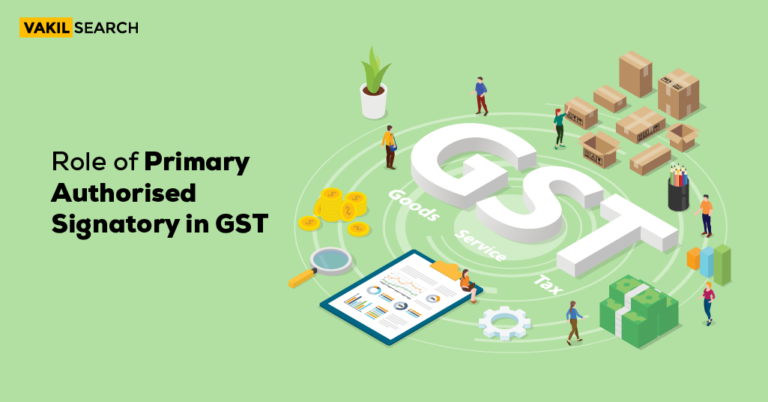GST rate has increased for all laptops and computer-related devices. Do you want to know about GST rate and HSN code of these devices, then here is everything you should know.
On the 1st of July 2017, the government of India implemented Goods and Service Tax(GST) to replace all the other indirect taxes implemented by state and central governments on the customers. These indirect taxes include Service Tax, VAT, Central Excise, Entertainment Tax, and many others.
With the implementation of the Goods and Service Tax, the tax filing process became extremely straightforward and easier for all the citizens of India. The main aim of the Indian government behind the implementation of GST was to eliminate the practice of double taxation.
GST is levied on everyone starting from the manufactured to the end consumer, and it works in such a way the end customer has to pay tax on only the value addition. Many people appreciated this step of the Indian government, and GST was a game changer in the Indian Taxation system. Goods and Services Tax was implemented in each and every sector, and it was different for all the sectors.
Some GST slabs were created which decided the percentage of GST applied to a particular product or service. Same with the IT sector. The IT sector is the fastest growing sector in India, and it has brought a digital revolution to our country. In today’s modern world, it doesn’t matter whether you are a student, employee, business owner, or average person; everyone needs electronic gadgets, especially laptops and computers.
Laptops play a crucial role in everyone’s life, and GST over laptops has increased over time. This is the primary reason why laptops have again become really expensive suddenly. Hence, you should be aware of all the details related to GST that are implemented on laptops. Today, in this blog post, we will share every detail related to GST: https://reg.gst.gov.in/registration/ and HSN code for laptops that you should definitely check out.
What Was The Tax On Laptops In The Pre-GST Era?
In the pre-GST Era, VAT was implemented on the sale of all laptops, and it used to be between 14-15% depending on the state where the laptop was sold.
What Is GST On Laptops?
The Goods and Services Tax (GST) rate on laptops in India is 18%. This rate is subject to periodic revisions by the GST council, and it is advisable to check for the latest updates. The 18% GST encompasses various electronic goods, including laptops, and is applicable to the sale of laptops across the country. Businesses and consumers should be aware of this rate when purchasing laptops, as it affects the overall cost. Staying informed about GST rates ensures compliance with tax regulations and facilitates accurate financial planning for those involved in the purchase and sale of laptops in the Indian market.
HSN Code For Laptops And Other Computer devices
Laptops, desktops, and other computer devices come under Chapter 84 of HSN. Here are all the HSN codes for the laptops and other computer devices.
- 8471 is the HSN code for automatic data processing machines and units thereof; magnetic or optical readers, machines for transcribing data onto data media in coded form, and machines for processing such data, not elsewhere specified or included
- 8471 30 is the HSN code for portable digital automatic data processing machines, weighing not more than 10 kg, consisting of at least a central processing unit, a keyboard, and a display
- 8471 30 10 is the HSN code for personal computers 8471 41 is the HSN code for other automatic data processing machines comprising in the same housing at least a central processing unit and an input and output unit, whether or not combined
- 8471 41 10 is the HSN code for microcomputer
- 8471 41 20 is the HSN code for large or mainframe computer
- 8471 41 90 is the HSN code for other automatic data processing machines
- 8471 49 00 is the HSN code presented in the form of systems
- 8471 50 00 is the HSN code for processing units other than those of sub-headings
- 8471 41 or 8471 49, whether or not containing in the same housing, one or two of the following types of units: storage units, input units, and output units
- 8471 60 is the HSN code for input or output units, whether or not containing storage units in the same housing
- 8471 60 10 is the HSN code for combined input or output units
- 8471 60 25 is the HSN code for a plotter
- 8471 60 29 is the HSN code for others under the printer category
- 8471 60 40 is the HSN code for a keyboard
- 8471 60 50 is the HSN code for a scanner
- 8471 60 60 is the HSN code for a mouse
- 8471 60 90 is the HSN code for other
- 8471 70 is the HSN code for storage units
- 8471 70 10 is the HSN code for floppy disc drives
- 8471 70 20 is the HSN code for hard disc drives
- 8471 70 30 is the HSN code for removable or exchangeable disc drives
- 8471 70 40 is the HSN code for magnetic tape drives
- 8471 70 50 is the HSN code for cartridge tape drives
- 8471 70 60 is the HSN code for CD-ROM drives
- 8471 70 70 is the HSN code for digital video disc drives
- 8471 70 90 is the HSN code for other under-storage units
- 8471 80 00 is the HSN code for other units of automatic data processing machines
- 8471 90 00 is the HSN code for other
How Was Tax Levied on Laptops in the Pre-GST Era?
In the pre-Goods and Services Tax (GST) era, laptops in India were subject to a complex tax structure characterised by the cascading effect of multiple indirect taxes. The Value Added Tax (VAT) and Central Sales Tax (CST) were among the key components contributing to the taxation of laptops. Additionally, Excise Duty was levied on the manufacturing stage, further complicating the tax landscape. The absence of a unified tax system resulted in a lack of seamless input tax credit mechanisms, leading to tax on tax scenarios.
Under the previous regime, each state had its own set of tax rates, creating disparities and administrative challenges. This not only increased the overall tax burden on laptops but also hindered the free flow of goods across state borders. The introduction of GST in 2017 aimed to streamline and simplify this taxation structure, promoting a more efficient and unified tax system for laptops and various other goods and services.
Conclusion
If you need any more help or further information regarding this, you can get in touch with the legal experts of Vakilsearch.
FAQs
Can we claim GST on the purchase of a laptop?
Yes, you can claim GST on the purchase of a laptop as long as you are a registered business and use the laptop for business purposes. Ensure you have proper documentation, such as a valid tax invoice, to support your GST claim.
What is the GST rate for laptop resale?
The GST rate for laptop resale is typically determined by the Goods and Services Tax (GST) council. As of my last knowledge update in January 2022, the standard GST rate for electronic goods, including laptops, is 18%. However, it's advisable to check the latest GST rates as they may be subject to change.
How do I claim my GST refund?
To claim your GST refund, you need to file a GST refund application online through the GST portal. Ensure that you meet the eligibility criteria, provide accurate details of your transactions, and submit the necessary supporting documents. The refund process is facilitated by the GST authorities after due verification.
How much is GST on a phone?
The GST on a phone is subject to the prevailing rates set by the GST council. As of my last knowledge update in January 2022, the standard GST rate for electronic goods, including mobile phones, is 18%. However, it's crucial to check the latest GST rates, as they may be revised by the authorities.
How do I claim GST on my Lenovo laptop?
To claim GST on your Lenovo laptop, ensure you are a registered business and have purchased the laptop for business purposes. Keep the necessary documents like a valid tax invoice. Include the GST paid on the laptop in your GST return, following the standard procedure for claiming input tax credit on eligible purchases.










